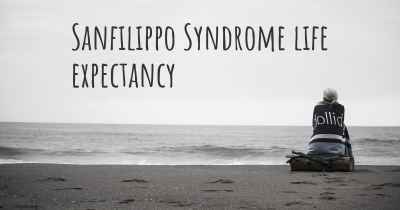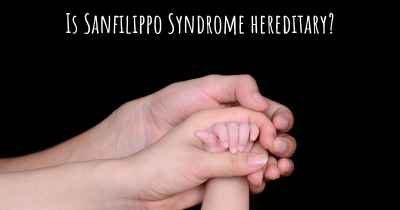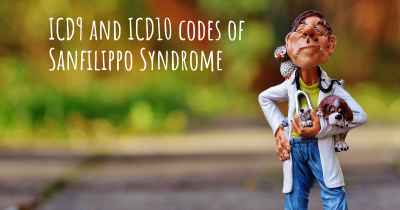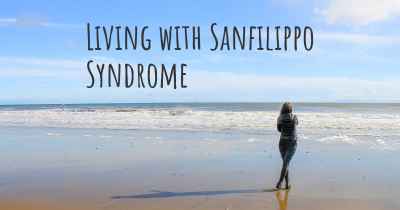Is there any natural treatment for Sanfilippo Syndrome?
Are there natural treatment(s) that may improve the quality of life of people with Sanfilippo Syndrome? Here you can see if there is any natural remedy and/or treatment that can help people with Sanfilippo Syndrome
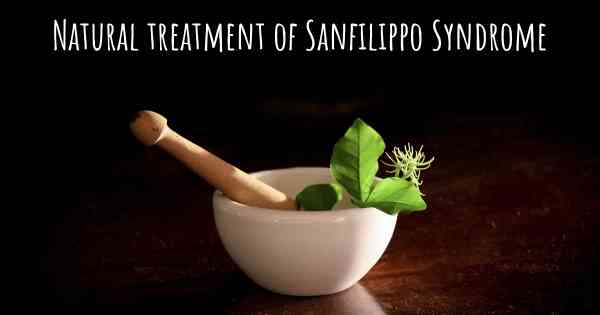
Is there any natural treatment for Sanfilippo Syndrome?
Sanfilippo Syndrome, also known as mucopolysaccharidosis type III (MPS III), is a rare genetic disorder that affects the body's ability to break down certain sugars. It is a progressive condition that primarily affects the brain and nervous system. Unfortunately, there is currently no known cure for Sanfilippo Syndrome. However, there are various natural treatments and supportive therapies that can help manage the symptoms and improve the quality of life for individuals with this condition.
Dietary Modifications:
One of the natural approaches to managing Sanfilippo Syndrome involves making dietary modifications. Since the body has difficulty breaking down certain sugars, it is important to limit the intake of these sugars. This includes reducing the consumption of foods high in carbohydrates and sugars, such as processed foods, sugary snacks, and beverages. Instead, focus on a well-balanced diet that includes plenty of fruits, vegetables, lean proteins, and whole grains.
Supplements:
Supplements can also play a role in managing Sanfilippo Syndrome. Some studies suggest that certain supplements may help support the body's natural processes and potentially slow down the progression of the disease. These supplements may include:
- Coenzyme Q10 (CoQ10): CoQ10 is an antioxidant that helps protect cells from damage. It may have a positive impact on energy production and mitochondrial function, which can be affected in Sanfilippo Syndrome.
- Vitamin C: Vitamin C is known for its antioxidant properties and its role in supporting the immune system. It may help reduce oxidative stress and inflammation in individuals with Sanfilippo Syndrome.
- Omega-3 fatty acids: Omega-3 fatty acids, found in fish oil and certain plant sources, have anti-inflammatory properties and may support brain health. They may help reduce inflammation and improve cognitive function in individuals with Sanfilippo Syndrome.
It is important to consult with a healthcare professional before starting any supplements, as they can provide guidance on appropriate dosages and potential interactions with other medications.
Physical and Occupational Therapy:
Physical and occupational therapy can be beneficial for individuals with Sanfilippo Syndrome. These therapies focus on improving mobility, strength, and coordination, as well as enhancing daily living skills. Physical therapy may include exercises, stretches, and activities to improve muscle tone and flexibility. Occupational therapy may focus on developing fine motor skills, adaptive techniques, and strategies for independent living.
Speech and Language Therapy:
Sanfilippo Syndrome can also affect speech and language development. Speech and language therapy can help individuals with Sanfilippo Syndrome improve their communication skills. This therapy may include exercises to strengthen oral muscles, techniques to improve speech clarity, and alternative communication methods, such as sign language or augmentative and alternative communication (AAC) devices.
Behavioral and Psychological Support:
Individuals with Sanfilippo Syndrome may experience behavioral and psychological challenges. It is important to provide appropriate support and interventions to address these issues. This may involve working with psychologists, behavior therapists, and other professionals who specialize in developmental disorders. Behavioral interventions, such as applied behavior analysis (ABA), may be used to address challenging behaviors and promote positive social interactions.
Supportive Care:
Supportive care is an essential component of managing Sanfilippo Syndrome. This includes regular medical check-ups, monitoring of symptoms, and addressing any complications that may arise. It is important to work closely with a healthcare team that specializes in genetic disorders and can provide comprehensive care.
Conclusion:
While there is currently no cure for Sanfilippo Syndrome, natural treatments and supportive therapies can help manage the symptoms and improve the quality of life for individuals with this condition. Dietary modifications, supplements, physical and occupational therapy, speech and language therapy, behavioral and psychological support, and supportive care are all important aspects of managing Sanfilippo Syndrome. It is crucial to work closely with healthcare professionals to develop an individualized treatment plan that addresses the specific needs of each person with Sanfilippo Syndrome.
Posted Jan 1, 2018 by Danielle 3160
Posted Feb 25, 2019 by Patty Jesse 3000
Posted Nov 3, 2019 by Anne-marie 2500
